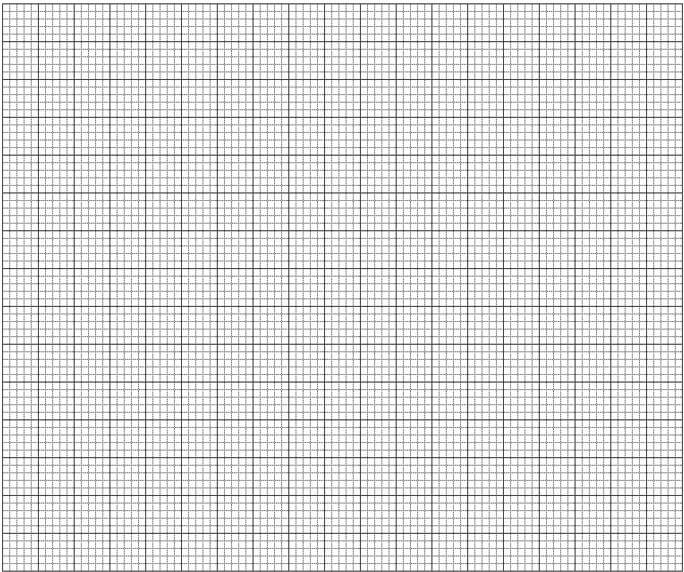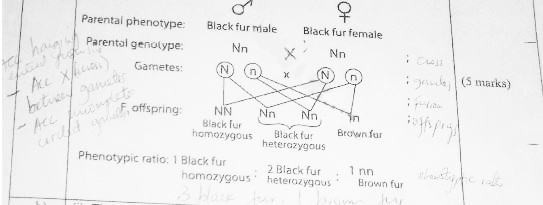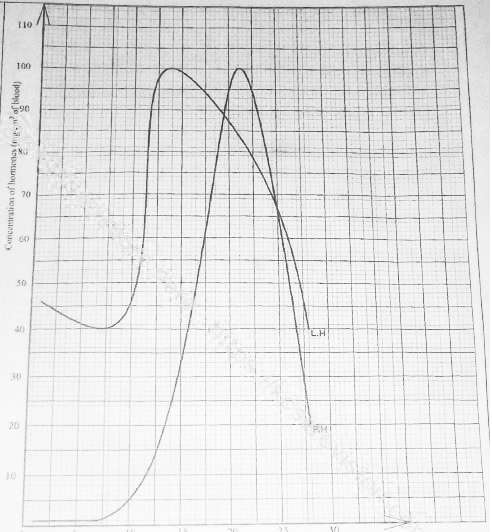SECTION A (40 marks)
Answer all questions in this section in the spaces provided.
- The photograph below shows an organism from a certain Class of organisms.

-
- Name the Class to which the organism belongs. (1 mark)
- Using observable features from the photograph, state two reasons for your answer
- State two ways in which the organism is important to the environment. (2 marks)
-
- Name the Kingdom to which bacteria belong. (1 mark)
- Name two bacterial diseases in human beings. (2 marks)
-
-
- State two adaptations of the frog's skin to gascous exchange. (2 marks)
- Explain how the human nasal cavity is adapted to gaseous exchange. (3 marks)
- Explain why the amoeba does not require an elaborate gaseous exchange system. (2 marks)
- Name the respiratory disease caused by Bordetella partusis (1 mark)
- The diagram below shows a section through the mammalian skin.

-
- Name the substance produced by the part labelled G. (1 mark)
- State two functions of the substance named in 3(a)(i). (2 marks)
- Name the part labelled E. (1 mark)
- Explain the function of the part labelled F to the mammal.(2 marks)
-
- Name one part of the human body where the cornified layer is thickest. (1 mark)
- Give a reason for your answer in 3(c)(i). (1 mark)
-
-
- Two dogs with black fur mated and produced an offspring with both black and brown fur. Given letter N represents the gene for black fur, determine the phenotypic ratio of the offspring. (5 marks)
- The photographs below show a hairy pinna in a human ear.

- Explain why this trait is only found in males. (2 marks)
- Name one other trait that only appears in males(1 mark)
-
- State the role of sunlight in the formation of strong bones. (1 mark)
- The photograph below shows the dorsal view of a part of the mammalian vertebral column.

- Name the part of the vertebral column shown. (1 mark)
- Name the part labelled H.
- State three ways in which the vertebra shown is adapted to its functions.
- Explain the significance of movement in plants.
- The photographs below show a hairy pinna in a human ear.
- Explain why this trait is only found in males. (2 marks)
SECTION B (40 marks)
Answer question 6 (compulsory) and either question 7 or 8 in the spaces provided after question 8.
- The table below shows the varying concentration of two hormones, progesterone and luteinizing hormone, determined at seven-day intervals during the human menstrual cycle.
Time in days 1 7 14 21 28 Concentration of progesterone (mg/cm3 of blood) 2 2 24 100 20 Concentration of luteinizing hormone (mg/cm3 of blood) 46 40 100 84 40 - On the same axis, draw graphs of concentration of hormones against time.(8 marks)

-
- Name the physiological process taking place when the concentration of luteinizing hormone is highest. (1 mark)
- State the significance of the process named in 6 (b) (i). (1 mark)
-
- Determine the concentration of progesterone hormone at which the endometrium is thickest. (1 mark)
- Explain your answer in 6(c)(i). (1 mark)
- State two roles of progesterone hormone in humans. (2 marks)
- Name two sites where progesterone hormone is produced in the human body. (2 marks)
- Name another hormone, apart from the luteinizing hormone, that inhibits the secretion of progesterone hormone. (1 mark)
-
- Predict the concentration of progesterone hormone seen days after the study period if fertilisation did not take place. (1 mark)
- Give a reason for your answer in 6(9)(i). (1 mark)
- Name the part of the human body where the luteinizing hormone is produced. (1 mark)
- On the same axis, draw graphs of concentration of hormones against time.(8 marks)
-
- Explain the role of the placenta during pregnancy. (10 marks)
- Explain features and mechanisms that hinder self pollination and self fertilisation. (10 marks)
-
- Describe how the xylem tissue is structurally adapted to its functions. Describe no (5 marks)
- Describe the functions of blood in the human body.(15 marks)

MARKING SCHEME
-
-
- Diplopoda;(2 marks)
-
- Two pairs or walking legs per segment;
- Many segments:
-
- Decomposes the organic matter/enriches soil fertility
- Aerates the soil through its movements/burrowing)
-
- Monera
- Cholera, Typhoid, Tetenus, Siphillis, Tuberculosis, (first two)
-
-
-
- Moist to dissolve respiratory gas for faster gaseous exchange
- Thin Lined with a one-cell-thick epithelium for faster diffusion of respiratory gases
- Highly vascularized for faster/efficient transportation of respiratory gases
Any two
-
- Lined with hair; to trap dust particles/foreign materials/purify (the incoming) air,
- Has mucus; to moisten/warm the incoming air
- Has a large surface area to volume ratio; diffusion (across its cell membrane) is adequate;
- Whooping cough;
-
-
- Sebum;
-
- keeps the skin moist/suppleton
- acts as an antiseptic; - accept kills bacteria
- makes the skin/hair water repellant / water proof
- Sweat pore;
- Thermoregulation; lies flat or erects (on the skin surface) when hot/cold to conserve heat or emit excess heat;
-
- Sole of the feet palm of hands;
- Thickest because they encounter high friction/hard-walking (soles of feet) and manual work (palms of hands);
-
-

-
- The trait is sex-linked; the gene responsible for the hairy pinna is 2 found/attached to the Y-chromosome;
- Hairy nose
- Duchean musular dystrofy
- Premature baldness;
- The trait is sex-linked; the gene responsible for the hairy pinna is 2 found/attached to the Y-chromosome;
-
-
- Sunlight enables the skin to synthesize vitamins Dy which is necessary for the formation of strong bones)
-
- Sacrum/sacral vertebra;
Accept sacral vertabrae - coccyx
-
- Broad transverse processes for articulate with ilium
- Presence of prezygapophysis to articulate with the lumbar vertebrae
- Large, broad centrum to offer support
- Wide neural canal for passage of spinal cord
- Fused vertebrae to form a rigid/firm structure
- Sacrum/sacral vertebra;
- Plants move to reach/access light/water/moisture/carbon (IV) oxide fub (2 marks) (for photosynthesis); they also move to escape harmful environmental conditions/for safety/withstand harsh external forces; as well as for (mechanical) support;
To enable fertilization (Max-2 marks)
-
-

Plotting- 02 marks
Scale - 02 marks
Smooth curves - 02 marks
Appropriate labelling of axes - 02 marks -
- Ovulation;
- Releases the ovum;
-
- 100mg/cm3 bf blood; Accept without units
- Endometrium is thickest when the concentration of progester highest (in preparation for implantation);
-
- Inhibits production of luteinizing and follicle stimulating hormones
- Stimulating the thickening of the endometrial lining(for implantation)
- maintains pregnancy; -Mause the fust 12 c).
-
- Corpus luteum/ovary;
- Placenta;
- Prolactin hormone;
-
- Will remain low/keep decreasing any value below 20 mg/cm3
- The Corpus luteum will have broken down/degenerated
- (Anterior) pituitary gland;
-
-
- The placenta plays the respiratory, excretory; nutritive ndocrine xorine/ gland juar barrier; and immunological functions; Exchange of respiratory gases, supply of oxygen-to the foetus' tissues and removal of carbon (IV) oxide from the foetus takes place across the placenta; Nutrients/food substances are also released into the foetus from the mother's system through the placenta; The placenta also serves as a barrier, preventing the mixing of maternal and foetus' blood/poisonous/harmful substances from the mother;
Some hormones/enzymesy needed for the foetus' development are also passed from the mother to the foetus through the placenta;
Some antibodies needed for the protection of the foetus from infections are also passed from the mother to the focus through the placenta;
Some waste products, like urea, are also passed from the foetus through the placenta; - Dichogamy is mechanisms where either the male or female parts of the plant reproductive organs ripen at different times in some plants;
Protandry is when stamens ripen earlier and anthers release their pollen before the stigma is mature while protogyny-refers to where the stigma matures earlier hence becomes ready to receive pollen grains (common in plants of the grass family);
Self-sterility/incompatibility; is where pollen grains cannot germinate on the stigma of the same plant but only germinate on a different plant of the same species, hindering self-pollination;
Heterostyly; is a condition where stigma, is higher/above the anthen/stamen making it impossible for the pollen to land, accumulate and fertilize the ovules of the same flower)
Dioecious; plants have reproductive parts located separately on different plants of the same species discouraging self-pollination) Monoecious; plants have the reproductive parts located at different parts on the same plant, discouraging self-pollination;
- The placenta plays the respiratory, excretory; nutritive ndocrine xorine/ gland juar barrier; and immunological functions; Exchange of respiratory gases, supply of oxygen-to the foetus' tissues and removal of carbon (IV) oxide from the foetus takes place across the placenta; Nutrients/food substances are also released into the foetus from the mother's system through the placenta; The placenta also serves as a barrier, preventing the mixing of maternal and foetus' blood/poisonous/harmful substances from the mother;
-
- Xylem tissue consists of xylem vessels; and tracheids;
Xylem vessels are tubular, long/hollow structures/running loy coudu continuously from the roots through the stem to the leaves, its walls are strengthened with lignin; preventing them from collapsing; the Xulov vessels have bordered pits; to allow pássage of water;
Tracheids have chisel-shaped ends and perforated cross-walls; - It transports vitamins, mineral salts ayd digested food materials to tissues of the body where they are needed) hormones are also transported by blood from the secretory sites to the target tissues/organs" (to bring about the needed hormonal responses); plasma also transports enzymes to tissues where they are required to catalyze certain reactions; waste products (urealcletnia /carbon (IV) oxide) are also transported in the plasma to the excertory organs
Erythrocytes are important in the transportation of oxygen from the p lungs to different body tissues; and carbon (IV) oxide from (respiring) tissues to the lungs (for purification); by haemoglobin (a protein in the erythrocytes);
Plasma also plays a thermoregulatory role; by distribution of heat
Leucocytes protect the body against infections (from bacteria/viruses);
The plasma also transports antibodies; throughout the body for defense against pathogens;
Platelets play a role in clotting of blood protect damaged body tissues; preventing excessive loss of blood
- Xylem tissue consists of xylem vessels; and tracheids;
Download Biology Paper 2 Questions and Answers - KCSE 2021 Past Papers.
Tap Here to Download for 50/-
Get on WhatsApp for 50/-
Why download?
- ✔ To read offline at any time.
- ✔ To Print at your convenience
- ✔ Share Easily with Friends / Students
